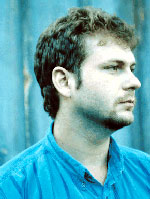 A little over a week ago, I was invited to a classified NGA facility to discuss geospatial technologies and capabilities.
A little over a week ago, I was invited to a classified NGA facility to discuss geospatial technologies and capabilities.
One of the things that came out of the conversation afterward, which I can discuss is AeroText, which is a product developed by Lockheed-Martin. AeroText shares some similarities to MetaCarta, in that it performs natural-language parsing and indexing of unstructured data.
Where AeroText particularly excells is in identifying things like people, things, places, events, temporal references, and co-references, for example if the subject of the discussion is Bill Gates, a subsequent reference to "he" or "his" may then be joined back to Bill Gates, as would other aliases, such as William Gates, Bill, or Mr. Gates.
AeroText appears to be a very powerful tool for intelligent extraction of data, and even supports multilingual applications.
On the geospatial side, the application uses a gazetteer of places of interest for resolving placenames. It appears to be very effective, allowing similar aliases to be utilized, however the content will be limited to locations contained in the gazetteer.
Here MetaCarta has the upper hand, as, in addition to a gazetteer, it also utilizes the Sagent geocoding engine to allow any street address to be resolved.
AeroText nonetheless appears to be a very robust and intriguing tool, with the main driving force being gurus who are linguists, as opposed to geospatial folks. However, I do see potential for tremendous growth for AeroText as it matures.

One of the things I'm excited about is playing with the release of Virtual Earth Version 3. One of the things I have been looking at is a set of technologies we are licensing, which provides a portable, self-contained hardware integration platform for a host of disparate types of sensors, from traffic monitoring to audio and video, weather, and CBRNE.
From there, it becomes a matter of rapidly bringing the sensor data into a mapping framework - hence my interest in tools like VE. I read with joy about the release on MapPoint B2B, and flipped to the MSDN VE Map Control documentation to see not only that the documentation has been improved since my last foray with VE, but also now presents better information on how to utilize VE for routing, and most exciting, how to render lines and polygons in VE.
Technorati tags:
.net, .net 2.0, aerial photography, AJAX, applications, asp.net, atlas, dotnet, geo, geometry, Geospatial, gis, google earth, html, imagery, javascript, livelocal, map, mapping, microsoft, microsoft atlas, spatial, SVG, symbology, symbols, UI, user interfaces, virtualearth, webmapping, yahoomaps
 I just read an interesting article about technology being developed by a Los Alamos Ph.D. staffer named David Reagor. Reagor has been working on the device for 10 years, using a very low frequency (VLF) transciever, digital signal processing (DSP) and audio compression. The current prototype is called 'Canary II' and can work at depths of up to 500 feet. It's being commercially developed by Vital Alert Communication of Huntsville, ON.
I just read an interesting article about technology being developed by a Los Alamos Ph.D. staffer named David Reagor. Reagor has been working on the device for 10 years, using a very low frequency (VLF) transciever, digital signal processing (DSP) and audio compression. The current prototype is called 'Canary II' and can work at depths of up to 500 feet. It's being commercially developed by Vital Alert Communication of Huntsville, ON.
Quecreek initially struck a nerve with me, the mapping issue was fore on my mind. As I live in the heart of historic Anthracite mining territory, and having a land surveying background, I'm familiar with traditional methods of mine mapping - the major issue being transferring surface control reliably, after which mine engineers and surveyors try to count on reliable angular and distance measurements. Such technologies as theodolites and total stations equipped with gyrocompasses have been developed, but obviously GPS is out of the question, given the communication issue when transmitting through solid rock. I have worked with historic mine maps on a number of projects, and know some of the issues with these maps firsthand.
At any rate, there were a host of other issues leading to Quecreek - it's conventional wisdom around these parts that at a certain point in operations, the surveyors were pulled out of the mines and mapping ceased. However, the mining did not. In what was referred to as "robbing", the mines were stripped, even beyond constraints considered safe, where even the pillars supporting the roof were stripped of coal. Additionally, there were a number of wildcat mining operations. In Northeastern PA, mining generally ceased after the 1959 Knox Mine Disaster, where miners inadvertently broke through under the bed of the Susquehanna River, killing 12 men and flooding mine works.
Blame on unreliable mapping aside...
We had Sago, a recent Chinese mine disaster where the death toll is still climbing, and currently miners trapped in Australia. Such a device as Reagor has developed would be a tremendous boon. There is no price tag to be attached to the life of a miner.
I have several interesting things cooking in the next few weeks – One we just had a kickoff for - Agency Best Practices, which follows much of what I have already been doing in Geospatial Enterprise Architecture, but which is all the more serendipitous in light of the Geospatial Line of Business effort by OMB. I have already been working on a concept of operations for transitioning to and implementation of reusable, distributed service components for geospatial business (SOA and other enterprise-level solutions). My previous effort will be expanded and merged with efforts by other Domain Experts in other arenas, such as Portal/SSO, Service-Oriented Architecture, ETL, and other technologies. I’m putting a draft together for May 15th.
One we just had a kickoff for - Agency Best Practices, which follows much of what I have already been doing in Geospatial Enterprise Architecture, but which is all the more serendipitous in light of the Geospatial Line of Business effort by OMB. I have already been working on a concept of operations for transitioning to and implementation of reusable, distributed service components for geospatial business (SOA and other enterprise-level solutions). My previous effort will be expanded and merged with efforts by other Domain Experts in other arenas, such as Portal/SSO, Service-Oriented Architecture, ETL, and other technologies. I’m putting a draft together for May 15th. The other is to perform another MetaCarta integration, this one to geo-enable a repository containing 50 million documents, for MetaCarta-powered geocoding and mapping. I will likely follow a similar model as the previous integration project, using ArcIMS and existing enterprise mapping as the base with a query interface, perform the SOAP call to the appliance, parse the response and plot them on an acetate layer. This one will be a new J2EE implementation from scratch, as opposed to the previous one, which was an integration into a legacy ASP/IIS-based application.
The other is to perform another MetaCarta integration, this one to geo-enable a repository containing 50 million documents, for MetaCarta-powered geocoding and mapping. I will likely follow a similar model as the previous integration project, using ArcIMS and existing enterprise mapping as the base with a query interface, perform the SOAP call to the appliance, parse the response and plot them on an acetate layer. This one will be a new J2EE implementation from scratch, as opposed to the previous one, which was an integration into a legacy ASP/IIS-based application.
Technorati tags:
applications, arcims, asp, design, developer, environment, environmental protection, epa, esri, geo, Geography, Geospatial, gis, internet, javascript, map, mapping, maps, metacarta, microsoft, programming, symbolization, symbology, tools, UI, user interfaces, usgs, vb, visual basic, visualization, web services, webmapping, website
 It's been a very busy week.... many back to back meetings, and a lot of fast and furious typing, multitasking, teleconferencing and a few brainstorming sessions which have left me drained.
It's been a very busy week.... many back to back meetings, and a lot of fast and furious typing, multitasking, teleconferencing and a few brainstorming sessions which have left me drained.
Among several other things that went out the door, we did submit a private-sector response to the Geospatial Line of Business RFI today. My public-sector counterparts have been quite harried as well. They have also been ordered by OMB to collect a variety of data on their geospatial business. Agency-wide data calls are being made to collect up data by the 15th.
I have also heard that some key agencies were alienated and somewhat uncooperative due to the OMB "bull in a china shop" approach. However, the public face and cooler heads have, for the most part, prevailed.
There are some indications that the Geospatial Line of Business may yet be a rocky place where consolidation will find limited purchase. One puzzlement/worriment is that even as the RFI responses have been submitted and OMB is looking to agencies to compile information on their geospatial assets and business, still no answers to the questions submitted at the Industry Days session or in the Q/A period subsequent have been posted on the OMB website. There are also some other questions about the legality of the approach...
Technorati tags:
business, cio, collaboration, community, e-government, ea, enterprise architecture, events, fea, federal, geo, Geospatial, gis, gsa, interoperability, mapping, metadata, news, ogc, OMB, opinion, policy, service-oriented architecture, SOA, spatial



